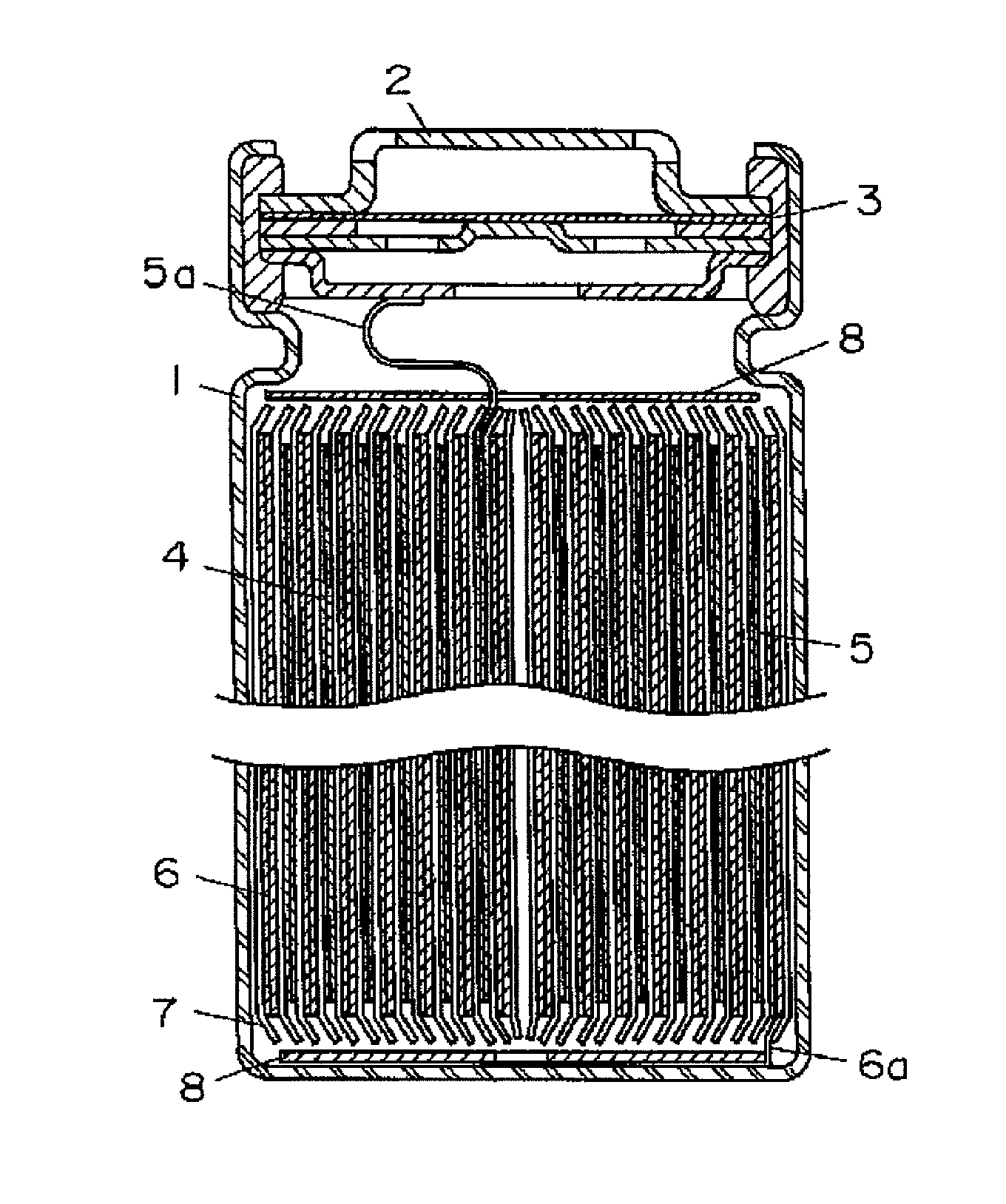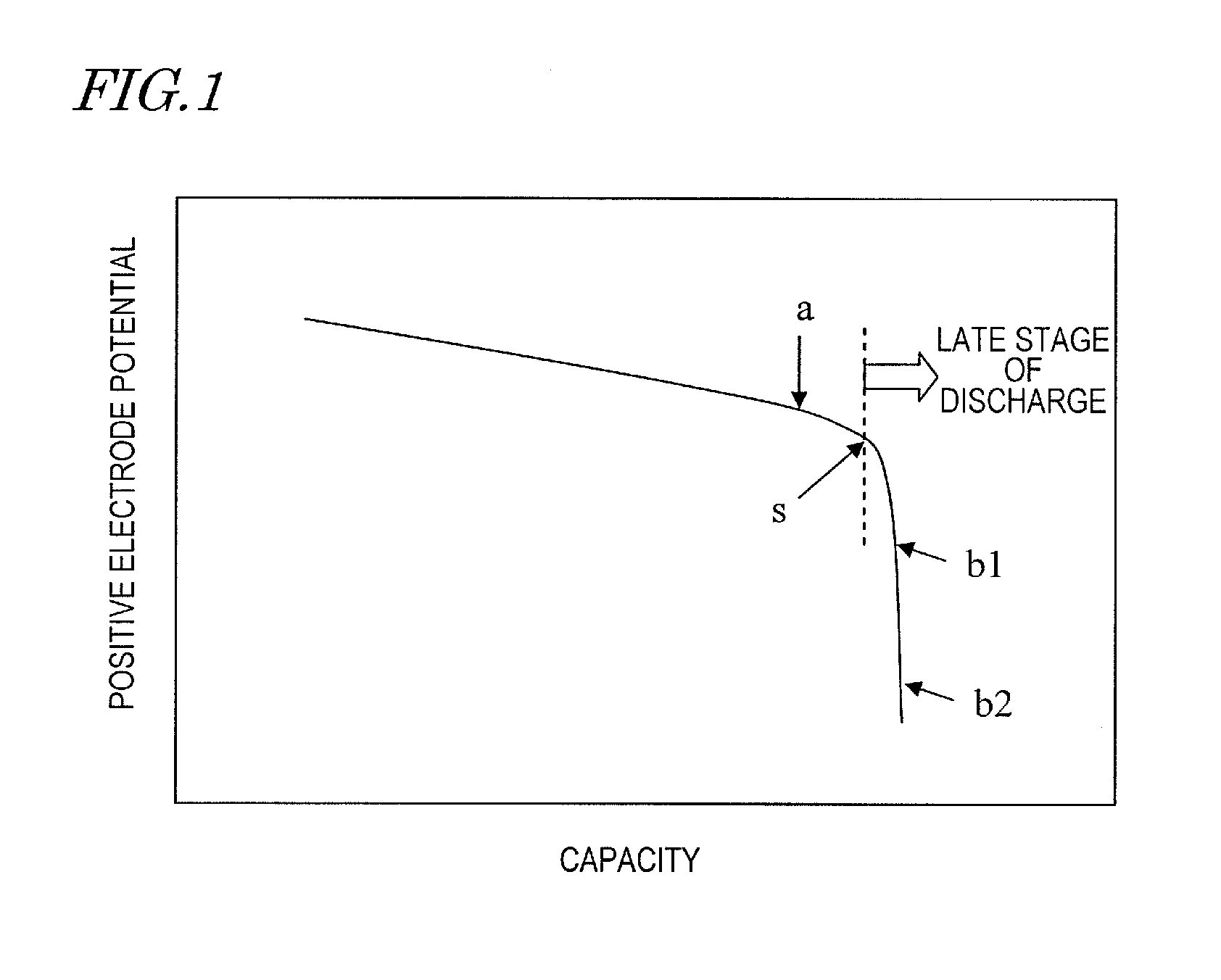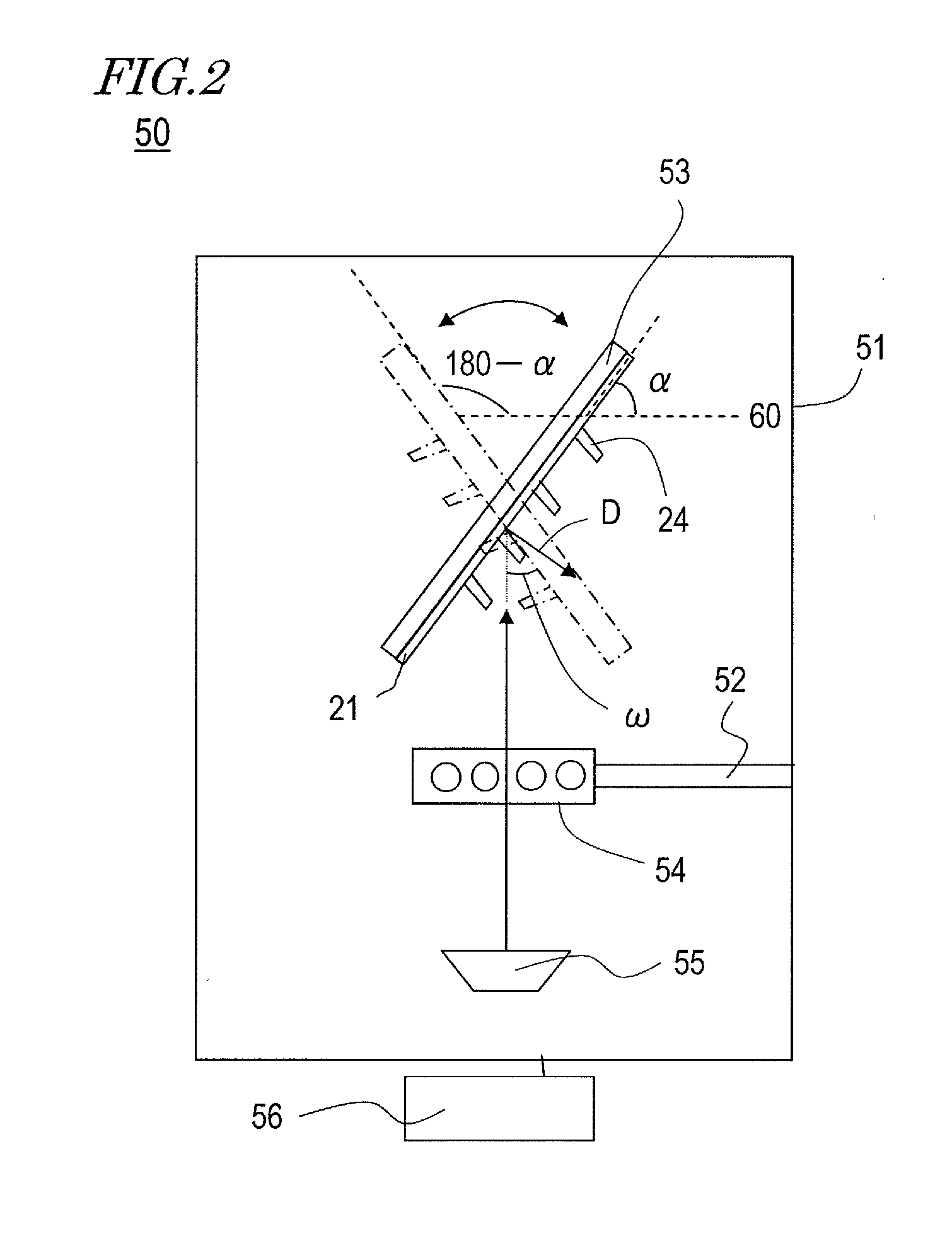Method for charging and discharging lithium secondary battery, and system for charging and discharging lithium secondary battery
a lithium secondary battery and charging/discharging technology, applied in the direction of secondary battery servicing/maintenance, cell components, electrochemical generators, etc., can solve the problems of short charge/discharge cycle life of lithium secondary batteries using linio, occlude/release a large amount of lithium, and reduce the capacity, so as to reduce the negative electrode utilization factor, reduce the initial battery capacity, the effect of high initial battery capacity
- Summary
- Abstract
- Description
- Claims
- Application Information
AI Technical Summary
Benefits of technology
Problems solved by technology
Method used
Image
Examples
embodiment 1
[0110]Hereinafter, Embodiment 1 according to the present invention will be described. This embodiment is directed to a charge / discharge method for a lithium secondary battery including a positive electrode containing a positive electrode active material, a negative electrode containing a negative electrode active material capable of occluding / releasing lithium, a separator located between the positive electrode and the negative electrode, and an electrolyte having a lithium ion conductivity.
[0111]The positive electrode active material in this embodiment is a lithium-containing transition metal oxide capable of occluding / releasing lithium. An example of material usable as the positive electrode active material is a complex metal oxide of at least one transition metal selected from cobalt, manganese, nickel, chromium, iron and vanadium, and lithium.
[0112]It is preferable to use, as the lithium-containing transition metal oxide, a nickel-based lithium-containing complex oxide, which is...
example 1
[0192]A lithium secondary battery using a nickel-based lithium-containing complex oxide as the positive electrode active material and graphite as the negative electrode active material was evaluated. Evaluation methods and results will be described.
[0193](1-1) Production of Positive Electrode Active Materials A, B and C
[0194]Positive electrode active materials respectively containing three nickel-based lithium-containing complex oxides of different compositions were produced. Specifically, positive electrode active material A having a composition expressed by LiNi0.815Co0.15Al0.035O2, positive electrode active material B having a composition expressed by LiNi0.76Co0.14Al0.10O2, and positive electrode active material C having a composition expressed by LiNi1 / 3Mn1 / 3CO1 / 3O2 were produced.
[0195]A method for producing positive electrode active material A will be described below.
[0196]First, an aqueous solution containing nickel sulfate at a concentration of 0.815 mol / L, an aqueous soluti...
example 2
[0262](Production of Positive Electrodes)
[0263]In this example also, substantially the same positive electrodes as those using positive electrode active material A and positive electrode active material C in Example 1 were produced.
[0264]In the positive electrode using positive electrode active material A, the thickness of the positive electrode, namely, the total thickness of the current collector and the positive electrode active material layer, was 72 μm, and the positive electrode capacity per unit area was 3.86 mAh / cm2. This positive electrode capacity was a capacity in the case where lithium metal was used for the negative electrode and constant-current charge / discharge was conducted under conditions of charge current value: 0.1 mA / cm2; end voltage: 4.25 V; discharge current value: 0.1 mA / cm2; and end voltage: 3.0 V.
[0265]In the positive electrode using positive electrode active material C, the thickness of the positive electrode, namely, the total thickness of the current col...
PUM
| Property | Measurement | Unit |
|---|---|---|
| temperature | aaaaa | aaaaa |
| threshold voltage | aaaaa | aaaaa |
| height Rz | aaaaa | aaaaa |
Abstract
Description
Claims
Application Information
 Login to View More
Login to View More - R&D
- Intellectual Property
- Life Sciences
- Materials
- Tech Scout
- Unparalleled Data Quality
- Higher Quality Content
- 60% Fewer Hallucinations
Browse by: Latest US Patents, China's latest patents, Technical Efficacy Thesaurus, Application Domain, Technology Topic, Popular Technical Reports.
© 2025 PatSnap. All rights reserved.Legal|Privacy policy|Modern Slavery Act Transparency Statement|Sitemap|About US| Contact US: help@patsnap.com



